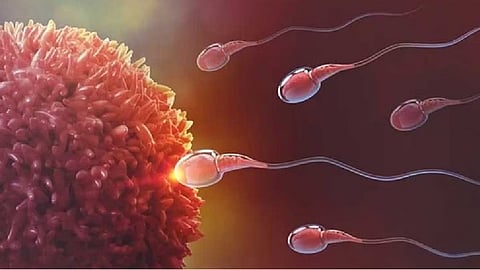

CHENNAI: Fertility is defined as the capacity to produce a child and infertility is inability / failure to conceive after 12 months of regular unprotected intercourse. For a woman aged more than 35 years of age who is not able to conceive, is due to diminished ovarian reserve. So evaluation is recommended if there is no conception 6 months after marriage.
Dr.Gayathri Devi S.S , Director - Reproductive Medicine, Rose Fertility and Women's care centre, says “The first birth in a women is increased globally in the past few decades and the average mean age of women at first birth has risen by almost 3 years in the last two decades. Females are postponing their pregnancy, due to varied reasons. Delayed childbearing in females occurs due to fertility decline because of advanced age. This decline is because of diminished ovarian reserve and diminished oocyte / embryo quality due to aging. “
Though the female fertility decreases with aging, the pace of reproductive decline can be differed in each woman.
Diminished Ovarian Reserve (DOR) is one of the recent challenges, clinicians & patients face in fertility treatment.
National ART surveillance system guideline defines DOR as:
• Reduced fecundity related to Diminished Ovarian Reserve.
• High FSH / high oestradiol measured in the early follicular phase.
• Decreased ovarian volume related to medical, surgical, congenital, or other causes.
• Advanced maternal age (>40 years).
Past few decades, women delay their childbearing function mainly due to professional/ educational goals / financial barriers. In view of these trends, from 2005 to 2014, there is 64% increase in IVF (In Vitro Fertilization) cycles approximately, reported by CDC (Centre for Disease Control).
Along with it, there is an increase in the diagnosis of DOR as an etiology for IVF from 8 to 32%. Hence, it is very important to understand the physiological and cellular mechanisms of female reproductive aging to improve the overall quality of life for aging women.
Female reproductive aging and the ovary:
The maximum number of oocytes in a female is reached by the fifth month of their in-utero life. Ovarian reserve is defined as the oocytes remaining in the ovaries, which is reflected by the primordial pool. The oocyte reaches its maximum number and then started declining till menopause wherein complete depletion happens. The number of oocytes at puberty is 5,00,000 and at menopause it reaches < 1000. The follicular depletion in ovary and aging is a continuous process which begins between 20-29 years of age. During this period there is relatively steady state of follicular attrition until age 35- 37yrs.
Visit news.dtnext.in to explore our interactive epaper!
Download the DT Next app for more exciting features!
Click here for iOS
Click here for Android